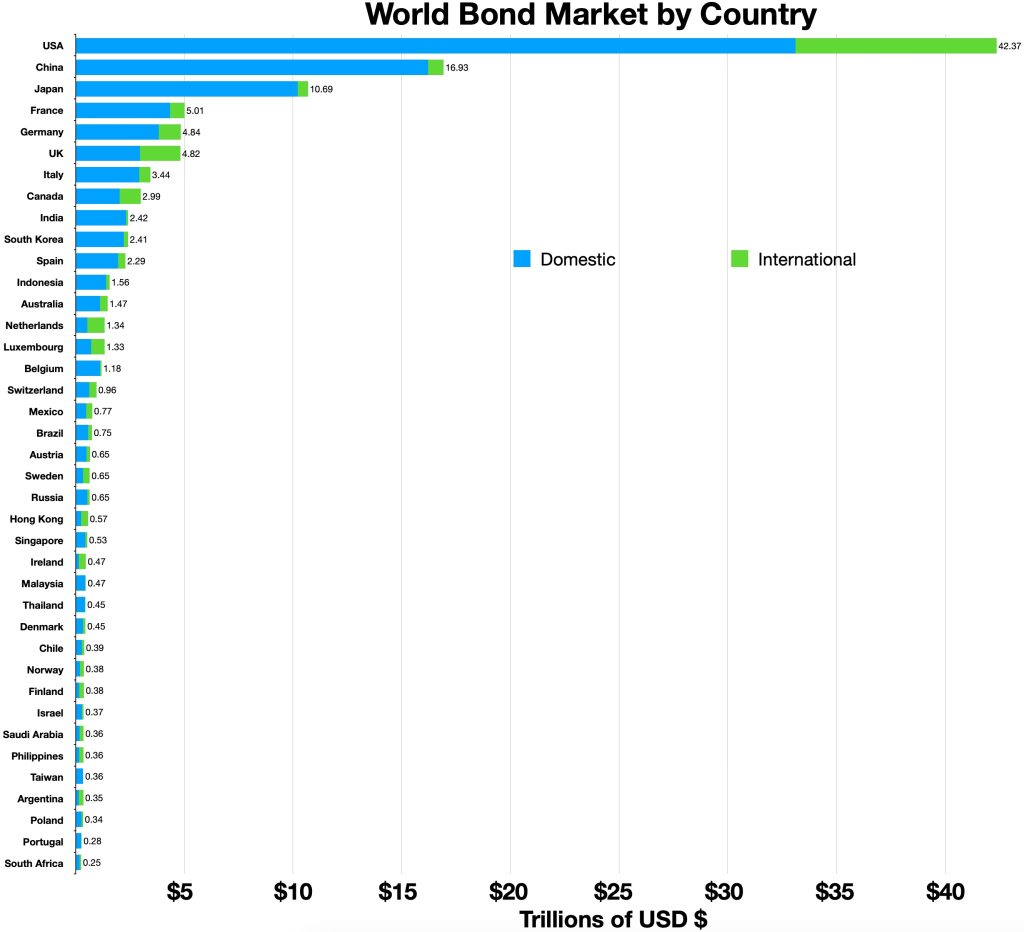Bonds are debt securities in which the issuer (the borrower) obliges himself/her/itself to pay the bondholder (the lender) the amount of the bond at maturity and to make regular interest payments. A bond is often known as fixed-income security since it typically provides the holder with a consistent or fixed return.
Rather than approaching a bank for the money, the company obtains the funds from investors who purchase its bonds. When you buy a bond, you are giving a loan to the entity that issued it. When you buy a government bond you are providing a loan to the government. If you buy a corporate bond, you are lending the corporation money.
In exchange, you are paid periodic interest payments (coupons), usually twice a year. This interest is expressed as a percentage of the face value. They also pay you back the principal or face value of the loan on a specific date (the maturity date). The principal of the loan is the amount that you used to buy a bond.
How do bonds work?
The government and corporate entities that need funds for financing their projects issue bonds. These bonds have a set maturity date and interest rate. An investor gives money to the organization by acquiring their bonds. Bonds are offered to investors at auction. Bidders compete for the bonds with the highest bidder getting the bonds at his/her bid rate. The successful bidder will benefit from its coupon rate. The coupon rate is simply the rate of interest on the bond. This interest is paid to the investor at regular intervals until the bond matures. The bond issuer will repay the investor the money they lent to the organization when the bond matures.
Bond terms to know
1. Bond issuer
This is the borrower or the issuing entity or company which is looking to raise funds from investors through the sale of bonds. This entity or company should repay the money borrowed.
Bondholder: This is the entity or company that buys the bonds on offer.
2. Face value
This is the value of the bond at the time of sale also referred to as face value. It is the amount that will be repaid to the bondholder upon maturity.
3. Maturity date
This is the date on which the face value of the debt is repaid to the investor. The maturities of bonds can range from overnight to 30 years or more.
4. Coupon
This is the rate of interest that an issuer will pay to the bondholder per year until the date of maturity. In most cases, it won’t change after the bond is issued. For instance, a bond with a coupon rate of 5% and a par value of $10,000 will have interest payments of $500 per year ($10,000 x 5% = $500).
5. Bond Yield
This is the income an investor will receive from investing in a bond. It is calculated by dividing the annual coupon on a bond by its current market price.
Bond Yield = Annual Coupon Payment on a Bond / Bond Price x 100
For example, a bond with a coupon rate of 5% and a face value of $ 10000 will yield interest of $ 500 per annum ($10,000 x 5% = $500). If the current price of the bond is $9500,
If the Bond Yield = Annual Coupon Payment on a Bond / Bond Price x 100
Then Bond Yield = 500 / 9500 x 100
Bond Yield = 5.26%
6. Price
This is the amount the bond would currently cost on the secondary market. Bonds are tradable on the secondary market. The prices at which bonds can be bought and sold are recorded in percentage terms.
For example, if a bond trades at 101% and the investor had bought a bond with a face value of $10,000, the current market price of the bond is $10,100. ($10,000 x 101% = $10,100).

Why buy bonds?
- They preserve capital, meaning that you will be paid exactly the amount that you used to buy a bond when the bond matures.
- Bonds give you a regular stream of income from the interest payments.
You may achieve an investment return that matches or exceeds the rate of inflation with good bond selection. - They do help mitigate some of the risks that you might be exposed to when investing in stocks or other types of asset classes. Bonds are useful in managing risks by cushioning investors against losses arising from market declines.
- Your investment portfolio becomes diverse when you invest in bonds.
- Bonds don’t give you ownership rights like stocks. Therefore you do not directly reap from the company’s success. However, you will not see as much negative influence if the company is not performing well as long as it’s able to cover its loans.
Dangers of investing in bonds
- Credit or default risk
This relates to bond issuers or borrowers where a risk of default arises when the bonds or debts are due perhaps due cash flow problems due to bankruptcy or insolvency.
- Interest rate risk
Interest rates and prices of bonds are inversely related. This implies that when the rate of interest increases, the price of the bond decreases (and vice versa). Interest rate risk is higher for bonds with longer maturity.
- Inflation
Bonds may turn out to be undesirable when inflation increases because the interest payments remain constant while the purchasing power declines.
- Foreign exchange risk
Some bonds are issued in a foreign currency (and the issuer is to make payments in that currency). The value of that currency may go up or down against your home currency. The effect of such foreign exchange swings may even nullify any income or capital gains from your bond investment.
⦁ Liquidity risk
This is the potential decrease in the prices of bonds when interest rates go up. The opposite is also true. This means having to sell a bond at a discount because there is no available market or buyer. For instance, if a bond has a low credit rating (e.g. it is a small issue or the issuer’s financial position is suspect) the liquidity risk is high. This implies that it would be difficult to buy or sell them at the correct price or within the required period.
- Event risk
takeovers, acquisitions, and reforms can have a negative impact on bond issuers’ capacity to service debt and bond values.
- Sovereign risk
The political and economic conditions of the country where the issuer of the bond is situated may influence the bond payments. In this case, the payments may be in the local currency of the issuer’s country rather than in the currency in which the bond was originally issued.
Conclusion
Buying bonds will offer you a regular income. They’ll also protect your capital and also increase the diversification of your investments. But this has to be done with risks in mind such as credit risk, Interest rate risk, inflation, foreign exchange risk, Liquidity risk, Event risk, Sovereign risk. It is important to remember that every investment has some risks and bonds are not an exception; however, if you know these risks and choose the right bonds for your financial needs and potential, you may benefit from them.


